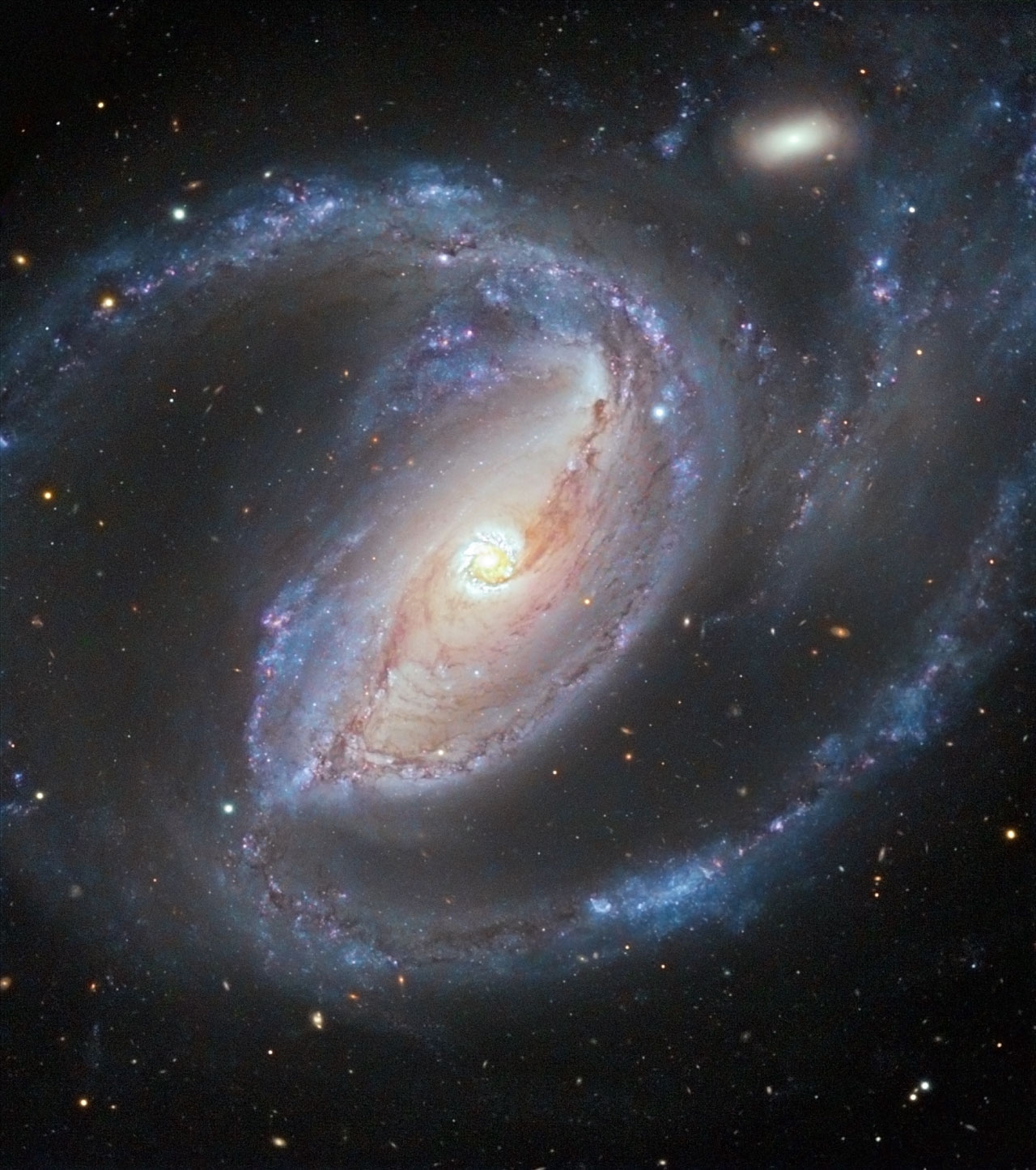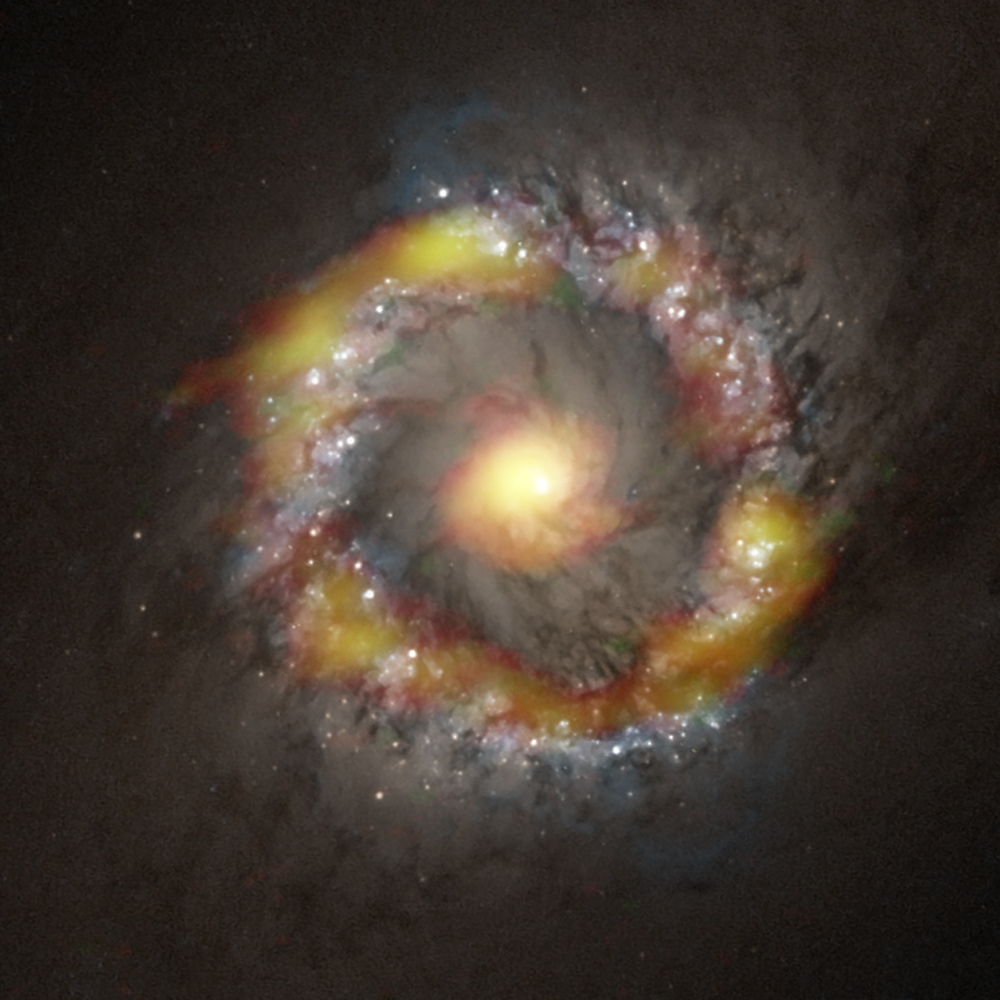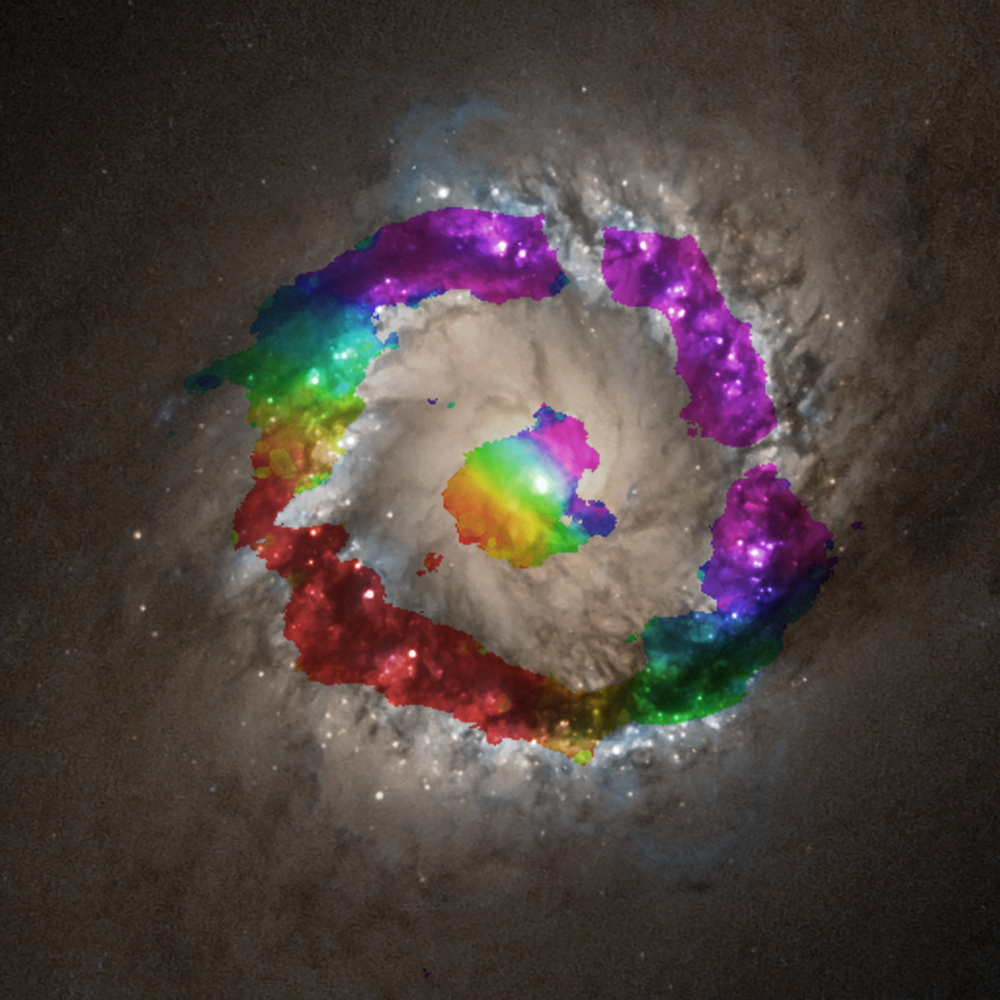140 Million Suns! Monster Black Hole Weighs In

A heavyweight black hole in the heart of a distant galaxy has the mass of 140 million suns, according to new measurements. A vivid video by the National Radio Astronomy Observatory describes how researchers "weighed" the black hole at the center of the barred spiral galaxy NGC 1097.
Many galaxies have huge black holes in their centers, and these objects affect the galaxies' growth and evolution. The galaxy NGC 1097 is 47 million light-years away from Earth, too far to determine the mass of its central black hole by the movement of the stars around it. But by tracking the movements of two types of molecular gases around the galaxy's center, researchers using the Atacama Large Millimeter/submillimeter Array in Chile (ALMA) were able to work backward and figure out the black hole's gravitational pull.
Their results show that this black hole is significantly larger than the one at the center of the Milky Way (140 million suns in mass versus the Milky Way's 4 million or so). [Milky Way's Monster Black Hole Unleashes Record-Breaking X-Ray Flare (Video)]

The ALMA telescopes tracked the radiation emitted from the two gases, hydrogen cyanide and formyl cation, as they swirled around the galaxy. The gases don't interact strongly with environmental conditions within the galaxy, such as ionized gas flowing inward or outward. This means the gases paint an accurate picture of the effects of gravity's pull alone. With just two hours of observational data, the researchers learned enough about the distribution and velocities of those gases to fit them to a model and calculate the pull of the galaxy's core black hole.

The mass of a central black hole affects the physical properties of its host galaxy, and recent work has shown that those effects are different for different types of galaxies, study lead author, Kyoko Onishi, a doctoral student at the SOKENDAI (The Graduate University for Advanced Studies) in Japan, said in a statement. To understand those effects, Onishi said it's important to measure the mass of these central black holes in various galaxy types.
Because of the quick precision measurements, "ALMA will enable us to observe a large number of galaxies in a practical length of time," added Onishi, who is doing her research at the National Astronomical Observatory of Japan (NAOJ).
The new research was detailed in The Astrophysical Journal on June 15.
Get the Space.com Newsletter
Breaking space news, the latest updates on rocket launches, skywatching events and more!
Email Sarah Lewin at slewin@space.com or follow her @SarahExplains. Follow us @Spacedotcom, Facebook and Google+. Original article on Space.com.
Join our Space Forums to keep talking space on the latest missions, night sky and more! And if you have a news tip, correction or comment, let us know at: community@space.com.

Sarah Lewin started writing for Space.com in June of 2015 as a Staff Writer and became Associate Editor in 2019 . Her work has been featured by Scientific American, IEEE Spectrum, Quanta Magazine, Wired, The Scientist, Science Friday and WGBH's Inside NOVA. Sarah has an MA from NYU's Science, Health and Environmental Reporting Program and an AB in mathematics from Brown University. When not writing, reading or thinking about space, Sarah enjoys musical theatre and mathematical papercraft. She is currently Assistant News Editor at Scientific American. You can follow her on Twitter @SarahExplains.









